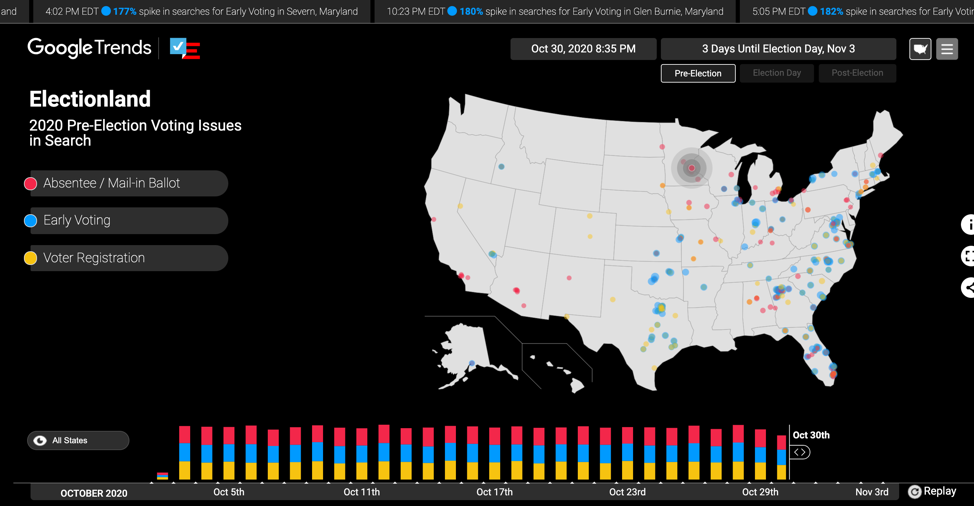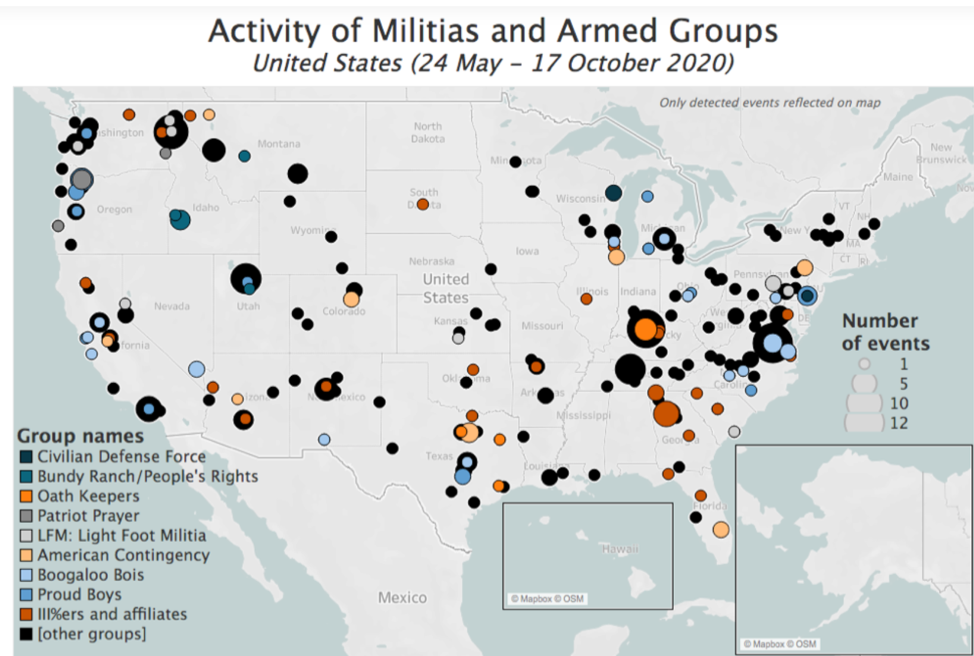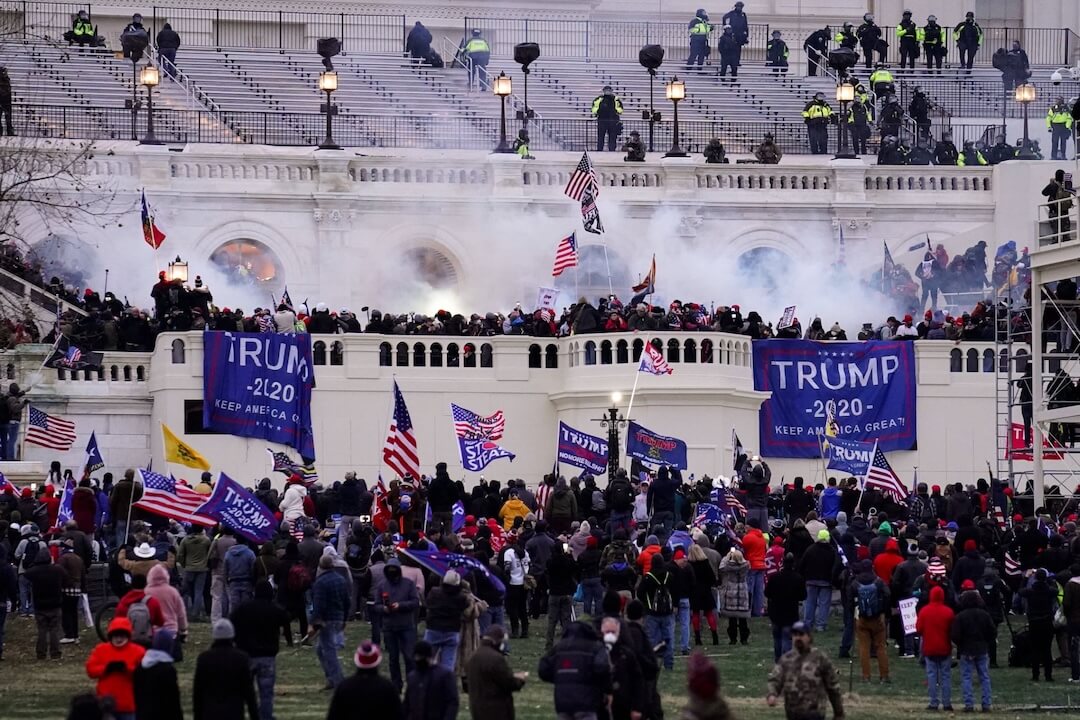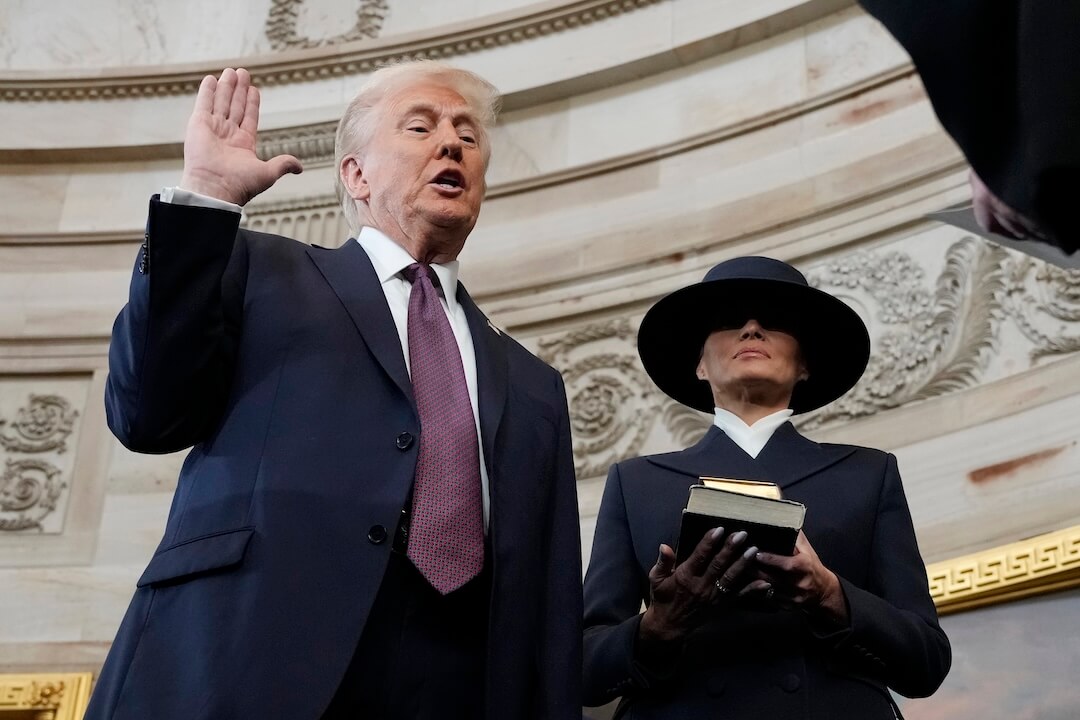 Covering COVID-19 is a daily Poynter briefing of story ideas about the coronavirus and other timely topics for journalists, written by senior faculty Al Tompkins. Sign up here to have it delivered to your inbox every weekday morning.
Covering COVID-19 is a daily Poynter briefing of story ideas about the coronavirus and other timely topics for journalists, written by senior faculty Al Tompkins. Sign up here to have it delivered to your inbox every weekday morning.
Friends, I suspect that you don’t have a lot of time to take in a deep edition of new material today so I thought it might be most useful for you if I pulled together a collection of tools and quick links that might be helpful in the days to come.
Electionland Trends
Pay attention to what people are searching for in connection with the election.
This should be a resource to see the hottest topics from your state that you might want to address.

(Screenshot, Google Trends)
A Google project called “Waves of Interest” gives you the power to enter an election-related topic — like gun control, immigration, abortion or health care — and see how much interest there has been from people using Google search in these topics. The tool maps the most and least interest in each topic.

(Screenshot, Waves of Interest)
Not surprisingly, interest in the terms “electoral fraud” and “fact check” is two to three times higher than it was four years ago.

(Screenshot, Waves of Interest)
[the_ad id=”667826″]
Immediate vote total updates
Google is using results from The Associated Press. Simply search for “election results” on Google and you’ll find real-time information for both federal and state-level races in more than 70 languages. You can also ask, “Hey Google, what are the current election results?” and Google Assistant will share information on mobile phones, smart speakers and Smart Displays.

(Google)
Extremist violence watch
An October 2020 report issued by the Department of Homeland Security concludes that “racially and ethnically motivated violent extremists — specifically, white supremacist extremists — will remain the most persistent and lethal threat in the homeland”
There has been a recent realignment of white supremacist groups and anti-government groups toward being politically active. The Armed Conflict Location and Event Data Project collects “real-time” data on armed conflicts all over the world, including the United States.
ACLED’s most recent tracking map of “right-wing” groups shows:

(ACLED)

(ACLED)
The Southern Poverty Law Center’s hate group map shows that any protest activity near you may depend on what groups are already active there — and it does vary by state.

(Screenshot, Southern Poverty Law Center)
Since the Three Percenters show up on a lot of watch lists, it might be useful to have some background on them. MilitiaWatch has been documenting that group for several years.
The Boogaloo Bois have also gotten a lot of attention since this summer, and the Proud Boys are also considered to be one of 2020’s more active armed groups. They often appear alongside other militia and white nationalist groups.
Left-wing groups also have the potential to cause disruption.
Protect the Results is trying to map protests. Reuters says, “The ‘Protect the Results’ coalition of over 130 groups from Planned Parenthood to Republicans for the Rule of Law, has about 400 events … planned to date. Participants are prepping to demonstrate ‘as early as the afternoon on Wednesday, November 4,’ the day after Election Day, and await a SMS message.”

(Screenshot, Protect the Results)
Disrn, a conservative news site founded by the creator of satire site The Babylon Bee, reports, “Left-wing activist group ShutDownDC has posted a plan to shut down the country and force President Trump from power if the presidential election is too close to call.” The group says the plan says, “Where we can, we need to be in the streets, on the highways, or at the sites of power and power holders. In our jobs and lives we must refuse to allow those taking control the legitimacy of the power they seek through strikes, slowdowns, and boycotts, and public refusal to accept an illegitimate ruling party.”

(ShutDownDC)
“In order to really win,” the document says, “we will need to force some pillars of power (business, military, media, or other major institutions) to decide to side with the people, or at least get out of the way.”
IsThisaCoup.com says it is tracking whether it thinks President Donald Trump is trying to steal the election.
HoldtheLine is also a group that has been planning what it calls a vote protection watch.
Other non-right-wing key names from ACLED include:
Antifa-The loosely organized anti-fascist movement known as ‘Antifa’ engages in two primary activities relevant to the behavior under review in this report. Local and interstate networks of antifascists organize counter-mobilization against right-wing street organizing, including against many of the groups analyzed below. The majority of ‘Antifa’ energy is spent towards counterintelligence operations, primarily doxxing right-wing activists and organizing publicly and semi-publicly available information. Antifa-affiliated activists are also rarely armed and do not exhibit a pattern of recruitment, training, and integration into a chain-of-command, like most militia and armed groups.
Not F___ing Around Coalition (NFAC) is a burgeoning Black separatist movement that, in many ways, is a direct reaction to many of the groups analyzed below. The NFAC is an all-Black, armed activist movement started and led by an Atlanta DJ known as Grandmaster Jay. They have appeared in opposition to mostly-white right-wing militia movements and continue to call for retribution for Breonna Taylor’s death at the hands of the Louisville police.
Key dates after this week to keep in mind
Tuesday, Dec. 8 – the “Safe Harbor” deadline:
The U.S. Code (3 U.S.C. §5) provides that if election results are contested in any state, and if the state, prior to election day, has enacted procedures to settle controversies or contests over electors and electoral votes, and if these procedures have been applied, and the results have been determined six days before the electors’ meetings, then these results are considered to be conclusive, and will apply in the counting of the electoral votes. This date, known as the “Safe Harbor” deadline, falls on December 8 in 2020. The governor of any state where there was a contest, and in which the contest was decided according to established state procedures, is required (3 U.S.C. §6) to send a certificate describing the form and manner by which the determination was made to the Archivist as soon as practicable.
Monday, Dec. 14 – Electors vote at the state level:
Monday after the second Wednesday in December of presidential election years is set (3 U.S.C. §7) as the date on which the electors meet and vote. In 2020, the meeting is on December 14. Electoral college delegations meet separately in their respective states and the District of Columbia at places designated by their state legislature. The electors vote by paper ballot, casting one ballot for President and one for Vice President. The electors count the results and then sign six certificates, each of which contains two lists, one of which includes the electoral votes for the President, the other, electoral votes for the Vice President, each of which includes the names of persons receiving votes and the number of votes cast for them. These are known as Certificates of the Vote, which the electors are required to sign.
Wednesday, Jan. 6, 2021 – Joint session of Congress to count electoral votes and declare a winner. If nobody has 270 electors, the Electoral College goes to work to choose a winner.
Wednesday, Jan. 20, 2021 – Inauguration Day
[the_ad id=”667872″]
Laws in all 50 states for postmarks and accepting ballots
In some places, ballots can arrive and still be counted days after Nov. 3.
Tracking the lawsuits
Both Democrats and Republicans have tracking websites that are staying on top of election-related lawsuits filed across the country.
The GOP lawsuit tracking website is called Protect the Vote. It shows the states in which the GOP has pending lawsuits as of this morning. Click on the map to learn more about the cases.

The red states on this map are where GOP lawsuits are pending. (Screenshot, ProtecttheVote.com)
Democrats have Democracy Docket. Click on the map to learn more about the cases. The Democrats have 21 lawsuits pending in the 10 blue states on this map.

(Screenshot, DemocracyDocket.com)
Democrats say, so far, they have won 43 election-related lawsuits.
How will the stock market react to whoever is elected?
Over time, stock markets have had a remarkably unremarkable reaction to elections. Looking back 100 years, there are occasional short-term reactions, especially when incumbents lose, but the trend is that they go up no matter who wins. But Wall Street does pay attention to how the down-ballot races turn out, too, because a president alone can only do just so much good or damage.
Fact Check Explorer
I suspect we will be buried in conspiracy rumors in the days ahead. One quick way to see if somebody has already done the legwork of running down a rumor is to use the Google Fact Check tool. It looks at fact-checking sites to see what has been reported.
You are still responsible for finding your own truth, but this will help you find the trailheads.
What happened in 2016?
This was the final electoral map of 2016.
Here’s a reminder of how the Electoral College works
It is the dust of the nearly 200-year-old 12th Amendment. Here is a quick tutorial, including why we have this system and what is bad/good about it.
Selfies at the Polls
This may be the most photo-documented election ever (I just made that up and can’t prove it). Let’s take a quick trip around the country to see what the state rules are on taking selfies at polling places.

(CNN)

(CNN)

(CNN)
Georgia, North Carolina, Texas, Ohio, Illinois and Arizona take a dim view of photos in the polling area. In Georgia, you can take photos outside of the voting location, just not inside. Arizona says you can take a selfie with your ballot but not of the polling place.
What you can and cannot wear while voting
Again, this depends on where you are. I have read about some voters who said they were turned away from voting for wearing shirts with “Black Lives Matter” or candidate names on them. CNN explains the ground rules:
Most states restrict campaigning within a certain distance from a polling place to allow people to vote without interference. Depending on where you live, that can include wearing or displaying anything with a political message.
So, you’ll probably want to leave that MAGA hat or “Joe 2020” T-shirt at home.
“The laws are specific to each state, and they are enforced by poll workers,” says Richard Hasen, a political science professor at the University of California, Irvine. “What one can wear, and whether other laws might violate the First Amendment, would have to be determined on a case by case basis.”
Other campaign-related apparel and handouts that are forbidden
You can browse your state’s restrictions on buttons, signs, stickers and other stuff that people want to hand out near the polls. Nearly every state has some level of restrictions. Here are three examples:
Election night newsroom food
I grieve for newsrooms that, because of the pandemic, may be turning to boxed meals rather than the time-honored newsroom pizza. In 2016, we asked newsrooms to send us photos of their election night food. There was bundt cake, some generic pasta and something called a “naked burrito bar” which I meant to get photos of, but forgot to ask.
Come on bosses, impress us with a spread that is as impressive as 2020’s news cycles.
[the_ad id=”667878″]
We’ll be back tomorrow with a new edition of Covering COVID-19. Sign up here to get it delivered right to your inbox.











